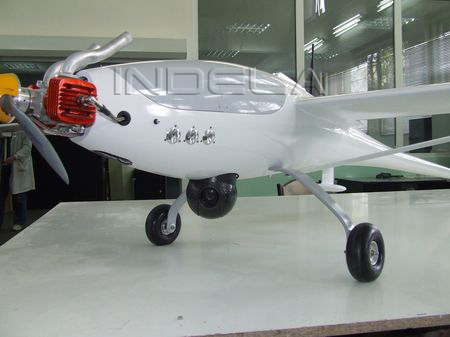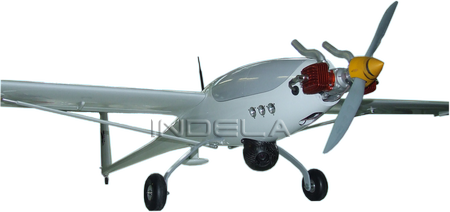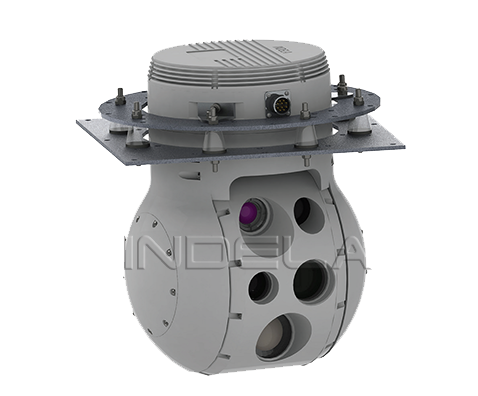INDELA – 6M
Robotic complex of airborne reconnaissance

Description
«INDELA-6M» designed for performance of a wide range of practical tasks:
- monitoring of territories and objects;
- monitoring of power lines;
- control of situation with regard to fire prevention;
- video information about use of main traffic arteries;
- carrying out of prospecting works;
- aerial mapping;

Information from UAV board is transmitted through a radio channel to the ground control station and is additionally recorded to the black box.

Characteristics
| Engine | Two-cycle, two-cylinder, opposite, of internal combustion | |
| Statistical traction | N | 161 |
| Volumetric capacity | cm3 | 56 |
| Engine power | KW | 4,0 |
| Hourly fuel consumption at V econom. | l/h | 0,68 |
| Parachute rescue system is designed for emergency landing | ||
| Min. height for activation of the parachute above the level of landing field | m | 100 |
| Barometric height of location of the area above sea level | m | up to 2000 |
| Key geometric characteristics | ||
| Length | mm | 2693 |
| Span of wings | mm | 6012 |
| Wing load | g/dm² | 235 |
| Weight data | ||
| Takeoff mass | kg | 35 |
| Standard fuel margin | l | 7 |
| Basic flight characteristics | ||
| Range of horizontal flight speed | km/h | 65-140 |
| Cruise speed | km/h | 80 |
| Takeoff speed | km/h | 67 |
| Landing speed at glide path with extended flaps | km/h | 55 |
| Planner’s quality | 13,63 | |
| Contact velocity | km/h | 60 |
| Flight attitude range | m | 50-3000 |
| Practical flight length | km | 440 |
| Flight duration | h | 5 |
| Control | ||
| Flight control | Automatic/dual | |
| Communication range (within line of sight) | up to 50 km (video channel) | |
| Communication range (within line of sight) | up to 100 km (telemetry) | |
| Control system | Autonomous navigation, automatic performance of the flight task, automatic performance of procedures in case of loss of contact/accident, automatic waiting for commands, continuous/on request telemetry | |
«INDELA-6M» uses optical gyro-stabilizing optoelectronic «INDELA OGD20-HIR» system.

Biaxial gyro-stabilized and completely integrated direct-drive suspension system.
Copyright © 2010-2015 INDEPENDENT DEVELOPMENT LABORATORY Inc. All rights reserved. Pricing, specifications and content all subject to change without prior notice.


